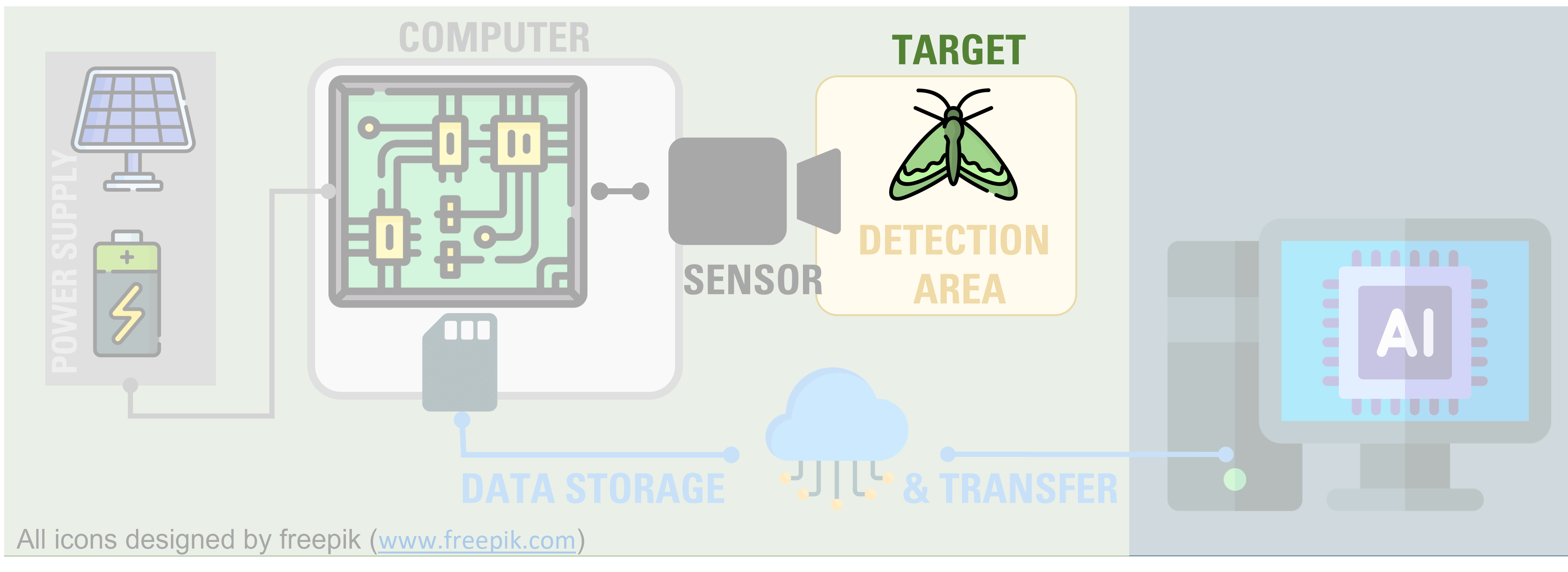Target area
Every sensor has a physical detection range and area, which is further variably limited by other factors.

For example, microphones used in bird surveys or wildlife monitoring can have widely varying detection ranges. Standard microphones may detect sounds within ranges of tens of meters to a few hundred meters, depending on factors such as ambient noise levels, background vegetation, and the vocalizations of the target species.
Directional microphones or parabolic microphones, which focus on sounds from specific directions, may have longer effective detection ranges, potentially reaching several hundred meters or more. However, they may have limitations in detecting sounds from other directions.
Ultrasonic microphones used in bat studies can also have detection ranges ranging from a few meters to tens of meters, depending on the specific model and environmental conditions. Some bat species such as Myotis bechsteini are notoriously hard to detect due to their low amplitude calls, while others such as Rhinolophus ferrumequinum can be heard from greater distances.
The detection range of a camera is determined by its focal length, angle of view, sensor size, aperature size and optical quality. Therefore, the greatest distance a camera can cover varies greatly depending on the type of camera, and of course the environment. Most trail cameras capture relatively nearby areas up to ~ 10 meters.
If animals are not only to be passively recorded, but actively lured towards the sensor, the target area can be equipped with attractants accordingly. Most automated moth monitoring stations use various light sources to attract as many insects as possible1,2,3. Those that are more focused on pollinators often use yellowish tones, which are used in parallel as background3,4. Alternatively, animals can also be directed towards the capture surface by building guiding structures.
QUESTIONS
- How does the design of the target area affect the comparability between sensor boxes?
- If there’s a fixed background, how could the background-color and material affect the results?
